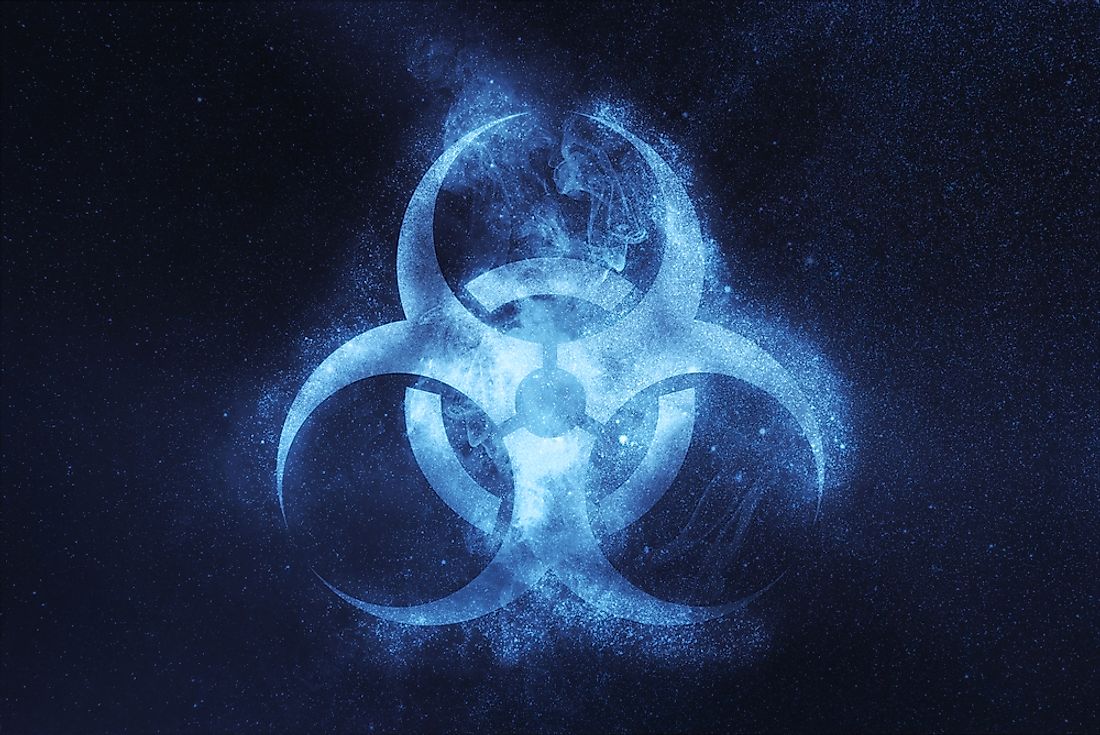A Brief History of Biological Warfare

Biological warfare, also known as germ warfare, is one of the most dangerous forms of warfare known to humankind. It has the capacity to wipe out entire populations and species from the face of the earth. It refers to the use of living biological agents, especially infectious agents like viruses, bacteria, fungi, and biological toxins to terrorize, kill and incapacitate human beings, plants and animals as a deliberate act of warfare. Bio-terrorism is also related to biological warfare, the difference being that in the former case, the biological weapons are used by a nation state clandestinely or by non-national groups like terrorist organizations while in the latter, the weapons are used by nation states during declared warfare events.
Biological Warfare Agents
The agents that can be used in biological warfare vary widely in their genetic composition, cellular structure, lethality, incubation periods, contagiousness, and other factors. Primarily, five types of biological agents can be potentially used as biological weapons: viruses (for example, the Small Pox virus, and viruses that cause hemorrhagic fevers), bacteria (like bacteria causing Anthrax, Cholera, Botulism, Bubonic Plague, Tularaemia, and Brucellosis), fungi (as agents for crop destruction), Rickettsiae (Typhus- and Q fever-causing microbes) and plant, animal, and microbial toxins.
Use of Biological Weapons in History
There are numerous examples from the past which has proven the high lethality of biological weapons. As early as the 14th Century, corpses of plague victims were catapulted by Mongols over their walls into the Black Sea port of Caffa, forcing the terrified occupants of the region to flee. Historians often believe that ships from this port carried the plague to Italy from where it spread as an epidemic among the European population, killing nearly 25 million people. Small pox eliminated thousands of native American people in North America when during the French and Indian Wars of 1767, British troops would deliberately introduce the blankets used by small pox victims to Native Americans.
Biological warfare became even more prevalent during the world wars. In the First World War, German forces implemented a clandestine program to damage livestock of the Allied forces by spreading anthrax among the livestock species. During the Second World War, Japan heavily experimented with biological warfare and killed nearly 3,000 human subjects, many of them being prisoners of war, by testing biological weapons on them. After the World Wars, many of the nations involved in the war continued to conduct large scale research on biological warfare during the Cold War era. However, the Biological Weapons Convention held in 1972, demanded that all the countries halt any such programs involving the development of bio-weapons. It was alleged that despite the signing of a treaty to enforce the law against biological weapons, the Soviet Union continued to conduct research on biological warfare which only stopped after the dissolution of the Soviet Union in 1991.
Future Safety Concerns
Today, very few of the 190 nations that comprise the United Nations, are suspected to have ongoing biological weapons development programs. The fact that such programs require less capital investment than nuclear weapon programs, can be easily masked, requires less space, personnel and infrastructure, makes it easy for even a relatively poor state to conduct such programs. There is also fear that terrorist organizations of the world might use bio-terrorism to exert death blows to the countries and people terrorized by them. There is an urgent need to ensure that the countries of the world co-operate with each other to track down and stop any ongoing bio-weapon development programs in the world and also innovate and prepare vaccines or other treatment options against the possible bio-weapons. Sound disaster management programs must also be planned out to reduce the casualties resulting from any unfortunate cases of biological warfare or bio-terrorism in the future.











